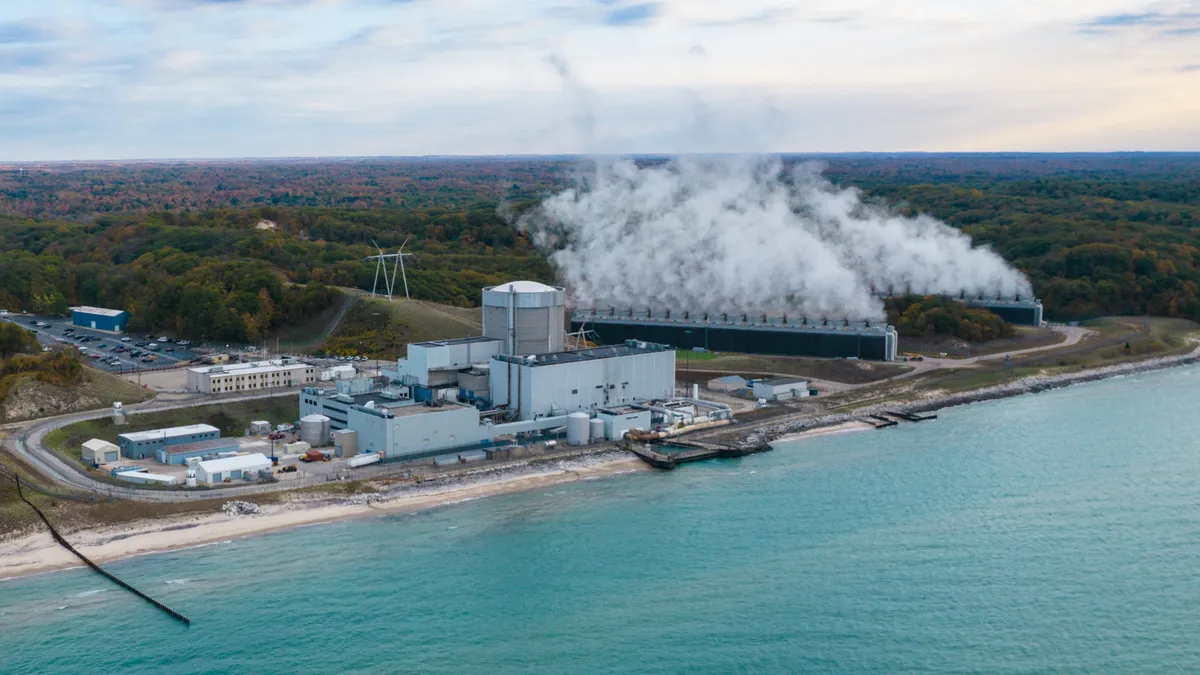The following is a Viewpoint from Ray Gifford and Matt Larson, managing partner and partner, respectively, in the Denver office of Wilkinson Barker Knauer LLP.
“I am shocked – shocked – to find that gambling is going on in here!” – Captain Reinault, Casablanca
Count us as reaching Claude Raines levels of faux indignation at DOE’s Notice of Proposed Rulemaking (NOPR) from last week. While the Grid Resiliency Pricing Rule proposal represents a little-used rule proposing role for DOE, the rule itself is a natural progression from state "around market" efforts to concoct pricing outcomes to an "in market" effort to concoct pricing outcomes.
There is certainly something to be shocked about with the DOE proposal. Shock at the use of seldom-used Section 403 authority. Shock that the proposal did not leak before it was issued. Perhaps some shock that the FERC quickly picked up the ball and established a rocket docket comment cycle. But what we should not be shocked about is the content of the proposal. An "around market" solution turning into a "in market" solution was inevitable.
For market purists, the injection of a cost-of-service regime into the so-called “competitive marketplace” is anathema. But markets premised on the Restructured Administrative Market Model (hat tip to our colleague Tony Clark who dubbed them that here) are not – and never will be – true markets in the sense of an emergent expression of consumer demand and supplier costs.
To be sure, the Restructured Administrative Market Model uses market institutions to buy and sell energy on a short-term (e.g., real-time or day-ahead) or longer-term (e.g., capacity) basis. But FERC administered markets will always exist as an administrative construct reverse engineered from a desired political and/or regulatory outcome.
Critiques of the DOE proposal as retreating from market-based principles arrive a little late in the game. Renewable portfolio standards (RPS), zero emission credit (ZEC) regimes, minimum offer price rules (MOPR), reliability must-run (RMR) contracts, administratively set demand curves, and other "marketisms" already depart mightily from market fundamentals. These institutions betray not just a willingness, but an ardor, to fiddle with the price system to preordain a "market" outcome. Milton Friedman or Adam Smith would not be weeping over the DOE proposal. They would have been rendered catatonic by the multitude of prior Rube Goldberg policy interventions into the "market" model.
Milton Friedman or Adam Smith would not be weeping over the DOE proposal. They would have been rendered catatonic by the multitude of prior Rube Goldberg policy interventions into the 'market' model.

The DOE proposal has been discussed in opinion pieces and Capitol Hill hearings as directed at “price formation.” This is speaking in code, at best. It is a re-regulation of select power plants within select Restructured Administrative Market Model markets through the introduction of cost-of-service regulation, if certain requirements, most importantly a 90-day fuel supply on-site, are satisfied by the plant.
As a policy matter, the DOE proposal is no different than "around market" solutions developed and upheld by the courts in New York and Illinois. They share the common characteristic of seeking to stop the exit of specific types of generation resources from the Restructured Administrative Market Model by helping those plants cover their relatively high fixed costs. So, if you loved ZECs as an allowable market correction, the DOE proposal stems from the same family tree. The state ‘around market’ measures simply morphed into a federal ‘in market’ measure.
If you loved ZECs as an allowable market correction, the DOE proposal stems from the same family tree. The state ‘around market’ measures simply morphed into a federal ‘in market’ measure.

That coal-fired generation is now added to the capacity subsidy game is also an inevitable step. As PJM Market Monitor Joe Bowring predicted, “subsidies are contagious … Competition in the markets could be replaced by competition to receive subsidies.” With tax subsidized renewables, MOPR price-lifted units, and ZEC-undergirded nuclear units, it is only natural that coal-fired units be added to the capacity subsidy conga line. Indeed, it would be malpractice for the operators of coal plants not to seek such support in the face of all the other manipulations already present in the market.
Furthermore, though seemingly remote, reliability and resilience concerns can be legitimate at specific times and in specific places. A “market” that allows unsubsidized capacity to fail or exit because of behind-the-scenes price formation favoring certain resources over others is not one that is acceptable as a matter of political economy or principled system planning.
While criticism has rained down on DOE for the proposal, it should not be criticized for trying to do something. To the agency’s credit, the proposal recognizes the Restructured Administrative Market Model is broken, which is hardly news to the merchant generators that participate in those markets. The notion of an "around market" solution coming from within the market itself is not new – just look at the MOPR – but the structure of the DOE proposal is a natural federal outgrowth of the ‘around market’ solutions already developed in the states.
The Restructured Administrative Market Model is broken. It is riven with subsidies and price manipulations, the political temptations to intervene and preordain market outcomes are irresistible. So long live the Restructured Administrative Market Model. And for proponents of an RPS, ZECs, the MOPR, RMR contracts, or any other acronym cloaking a subsidy in these markets, they should consider ceasing ridicule of DOE and instead turn to Secretary Perry: “I think this is the beginning of a beautiful friendship.”
Ray Gifford is the managing partner and Matt Larson a partner in the Denver office of Wilkinson Barker Knauer LLP.





















